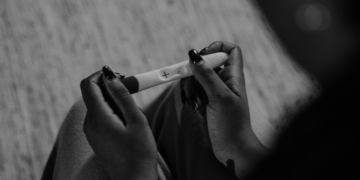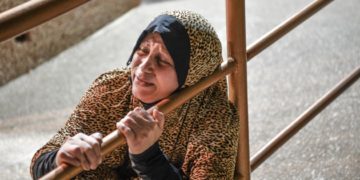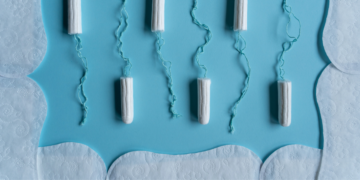As part of its activity, the Women’s Rights Center has developed a cultural program that fosters creative resistance. Medfeminiswiya spoke to painter, artist, and WRC cultural program coordinator Tanja Markuš about the different types of resistance in culture and art that could empower women.

“The program for culture was born out of the wish to expand the space of resistance,” Markuš says. “As part of the Center's team, I had the freedom to design a concept of action that would involve artists and human rights activists from different professional fields in a common fight against the non-culture of violence.”
“We started by reviving the celebration of March 8 (editor’s note: International Women’s Day) and emphasizing the political significance of this holiday. For seven years now, we have been organizing the March 8 protest march as an act of solidarity and civil resistance to various forms of brutality that are swept under institutions’ rugs. The noise leads us, because, despite the hard work, our rebellion is still accompanied by the music, voices, and laughter of young people who make all these efforts meaningful,” she continues.
“Through various cultural, artistic, and educational methods, we analyze what stands in the way of equality, criticize current discriminatory patterns, and advocate for the principles of feminism and anti-fascism. We formulate our vision with the lessons learned from our WW2 National Liberation Movement artists and revolutionaries who understood art both as an expression of the fighting spirit and a channel for transmitting knowledge. They brought literacy and emancipation to people by encouraging their creativity.”

Art history as an academic discipline during the second half of the 20th century gradually opened up to new approaches and theories such as feminism, Marxism, structuralism, psychoanalysis, and cultural studies, helping it depart from conservatism and a dogmatic approach. It is still necessary, however, to further develop the ability to raise suppressed questions of gender within the discipline itself.
Any attempt to run counter to the dogma that deviates from the nature of art and turns it into a simulation of political attitudes, itself also becomes subject to dogmatism and the recycling of already-seen ideas. Art must not be made half-heartedly. It is important that the artist's interest in social problems be authentic, and not conditioned by the EU financial trends, which is exactly what is happening to feminism now that it is in the mainstream of strategic financing. We are witnessing many people with indifferent or even conflicting attitudes to feminist goals all suddenly rushing for their share of the cake. Due to ignorance and a lack of ideas, these self-proclaimed leftist revolutionaries often turn to clichés, reciting rules of conventions and running around naked in search of gender identity. They will only engage in feminism until the next round of grants, at which point they will boost their creative superpowers to target the next endangered group or species. We’ve already seen this dynamic in action, like when COVID-19 pushed refugees off the top list of international funds, inspiring “artists” to quickly abandon the topic of “migrations” and fearlessly proclaim war on the virus.

What lies at the root of this art mutation is the contemporary attitude (or rather, the lack thereof) that art must have a precisely defined social role, with artists blindly following the latest trend. The question is whether something that has eluded definition for centuries, basing its moves on intuitive rather than rational decisions, can be assigned a function at all, beyond the one that is born from the very nature of art. Psychology explains the hidden mission of art by its ability to extract from the collective memory the forms that the current epoch lacks the most. Or, as Nick Cave says, the task of the author is “not to save the world, but the soul of the world.” I think it's time for art to return to its true nature, because only from that position can it have a social impact.
“So, what do we need to do? The same thing those who fought for our rights did before us: change perspective, sharpen our focus and tell the world what we see.”
For feminist revisionist interventions, the awareness of belonging to a political project is key, and this implies activism and the struggle for citizens’ basic rights. But how far can we go in achieving these rights without expanding the theoretical discourse on feminism to all disciplines? Are feminist studies represented at the University of Montenegro, at least in the departments of art, philosophy, and literature?
I can answer based on my own educational experience. We didn't learn anything about the poetics of female artists. Judging by the participants of the small school of smashing patriarchy, who come from different professional disciplines, the achievements of women also aren't mentioned in science, law, or other fields. When it comes to art students from the Short Course on the Abolition of Patriarchy, the situation is better, but they still do not have the opportunity to learn, from the official study programs, the importance of the art of Artemisia Gentileschi, Hanna Hoch, Hilma Von Klimt, Jenny Holzer... for structuring both artistic and social dialogue.

In which way do you process and problematize gender issues within the discipline itself during workshops and how do trainees receive this? Seeing as the works are a team effort?
I am grateful for the opportunity to work with these dazzling young artists. Due to their openness, unfettered by dogmas, their artistic curiosity, and the ability to absorb new knowledge, they learn fast about gender equality, especially since their generations are less susceptible to patriarchal stereotypes. In the workshops, we discuss how women are presented in art and everyday life, ask ourselves how female artists disappeared from official history, interpret feminist art poetics, and simultaneously analyze the current-day situation.
Although everyone works on their individual artworks, a dynamic creative exchange takes place—from the joint development of ideas to assisting each other technically. The aesthetic and ethical qualities of their works indeed make them a great example of action against discriminating practices and stereotypes.
However, the government, which could itself learn from these young people how to constructively approach a problem as complex as violence, does not invest in the professional development of artists. Excluded from artistic events, often without space to work, a large number of them have to focus their creativity on mere survival. That is why I am glad that we can give them the opportunity to present their work publicly.
In October 2022, at the Contemporary Art Centre of Montenegro, we organized the exhibition "Rebel Venus" in which 17 works from the last course were presented. The previous exhibition was held in the Parliament of Montenegro, at the invitation of the Committee for Gender Equality to jointly commemorate International Women's Day. As some artists were interested in participating in the workshops again, a young artistic guerrilla is circulating around the Women's Rights Center, spreading the ideas of equality.

Has feminism influenced your work as an artist, and is so-called "female aesthetics" acceptable to you at all?
Studies of cave drawings and figurines such as the Venus of Willendorf tell us that most of them were made by the hand of a woman. The records of the Roman writer Pliny the Elder even include a statement showing that the first drawing was made by a woman called Dibutades: she drew the silhouette of her lover on the wall. When was it decided that art was not a profession for women? Why were we erased from education? Would the white male gaze dominate the representation of reality if women had been allowed to express their view of the world they live in?
Art must not be conditioned by any factors that have nothing to do with its ideas. A creative act is grounded in spirituality, which is gender/racially/nationally neutral. There are no characteristics of works that are specific to their being created by either women or men to justify the division into male and female art. If we look through the history of art, the poetics of female artists are actually stylistically more similar to those of their male counterparts from the same periods or movements than they are to each other
Promoting female artists in a particularly reserved, isolated space neither contributes to the overall cultural dialogue nor to their equal participation on the art scene. In Jenny Saville’s words, “it gets on my nerves when they call me a female artist because only when that disappears will women really be part of the culture.”































